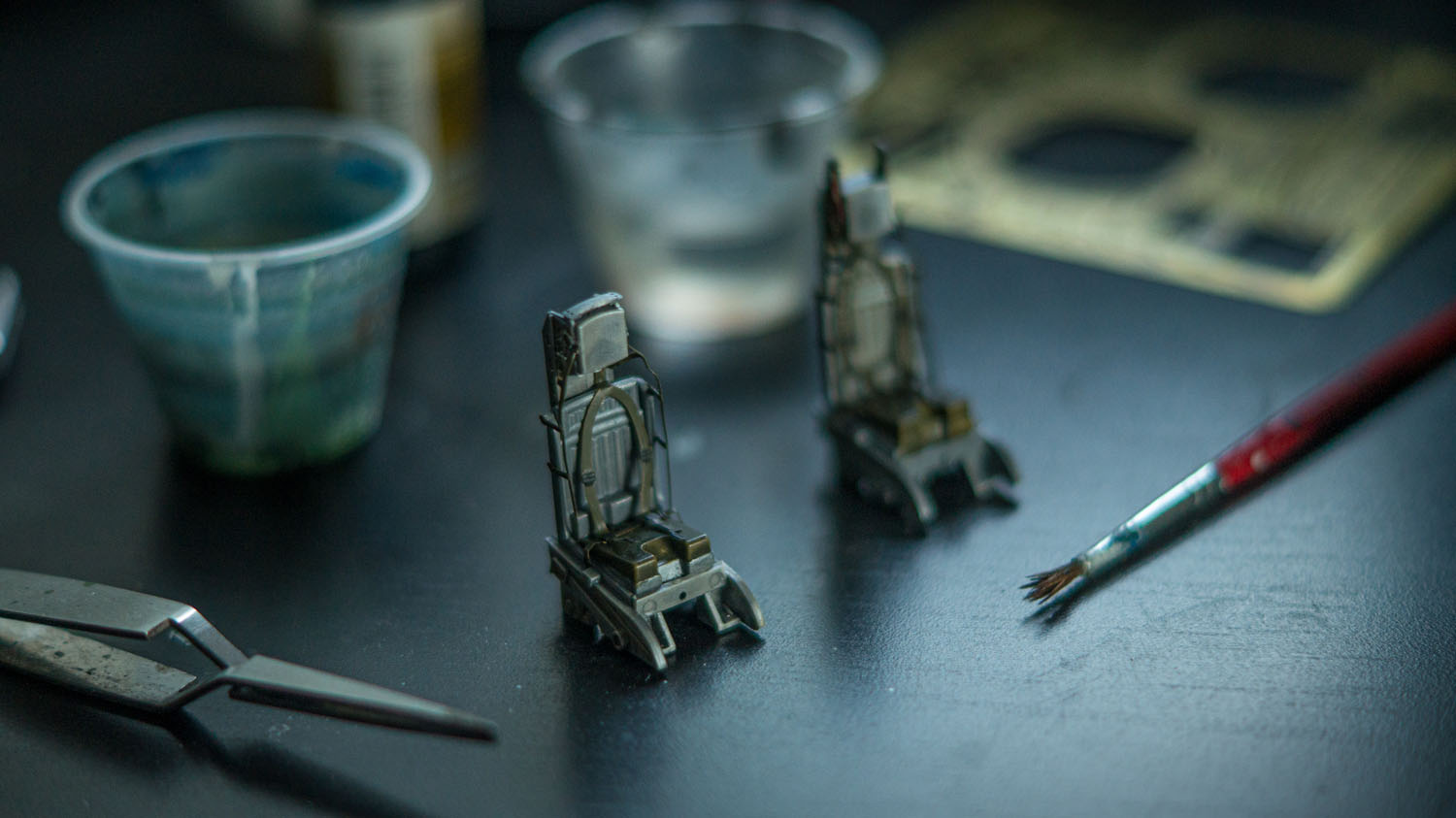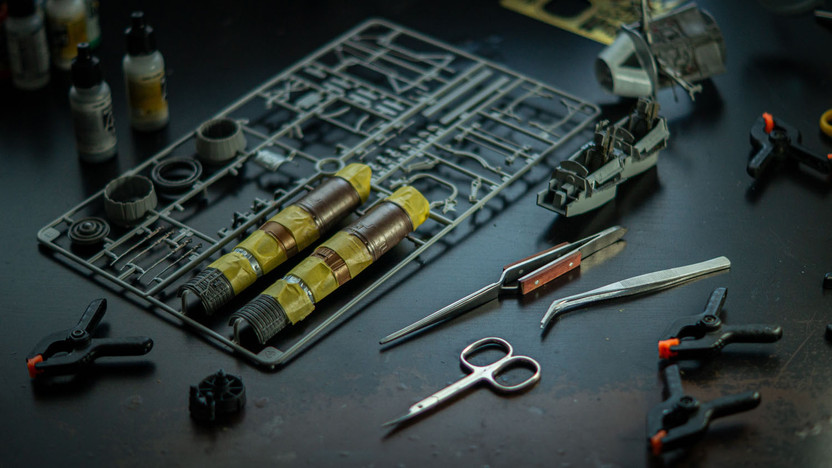Plastic Scale Model Supplies - How To Build Plastic Scale Models
Jun 26, 2018
Plastic scale model building is one of the oldest hobbyist activities, and it remains very popular today. Model building encourages precision, passion, and above all else, pride in a quality product.
When you first begin this new endeavor, you might find yourself pretty threadbare in the model-making materials that you use. As you move forward, grow your skills, and work on more complex projects, your supply kit will naturally grow.
Plastic scale model building is no stranger to the old adage of most great passions: “easy to pick up, difficult to master.” If you want to master the art of the plastic scale model, you need to start by obtaining the right scale model supplies.
10 Tools You Need - Plastic Model Supply Checklist
Not sure where to begin? Start by checking our list of plastic scale model essentials. Once you’re familiar with the tools you’ll need, we’ll go over the basic skills you should work on.
1. Hobby Knife
You’re going to need at least one hobby knife to cut, trim, and release parts and pieces. This will most likely be your most frequently used tool, so invest in a quality one, and get a backup or two.
2. Cutters
Some cutting tasks are better suited for a pair of cutters. Traditional wire cutters will handle most jobs, but you may want to get some flush cutters for smaller tasks. The scale model supplies you use depend on the model you’re building. Even if you don’t need them now, it never hurts to have model-making materials ready for the next build.
3. Tweezers
You’re going to be spending a great deal of time attempting to attach tiny pieces to very specific places. With reverse action tweezers, the grip tightens when you let go and loosens when you apply pressure, meaning your hand won’t be shaking as you try to place that piece just right.
4. Forceps
Building scale model kits is delicate work, and you’ll need a few scale model supplies specifically made for grabbing tiny pieces. Ask any model builder—there’s nothing more frustrating than dropping a small piece on the floor, never to be seen again! For this very reason, this pair of forceps is equipped with anti-slip serrations, ensuring that you never have to experience that disappointment.
5. Sanding and Shaping Tools
Although the quality of models has increased tremendously since the days of the hobby's inception, many practitioners still do a fair amount of filing, sanding, and shaping. For this reason, it’s always good to have some model-making materials on hand for shaping, and this diamond file does the trick perfectly. You may also want to add sanding sticks and sandpaper to your scale model supplies kit.
6. Air Dust Gun
There’s only one thing more frustrating than having a dusty, dirty model, and that’s breaking that model trying to wipe it down by hand. For this reason, this air dust gun is gentle, thorough, and one of the most important long-term plastic scale model-making materials around.
7. Painting Supplies
After you’re done building, it’s time to paint. Make sure you have paintbrushes in a variety of sizes. Acrylic paint is usually the best option for plastic model kits, although spray paint can be a great choice for larger surfaces. If you use spray paint, be sure to pick up a OSHA-rated two-canister mask for protection.
8. Model Cement
Model cement is one of the most essential scale model supplies for model kits that don’t snap together.
9. Clamping Items
You don’t want to be stuck holding two pieces together while the model cement dries! Clamps, rubber bands, and clothespins keep pieces secure while you wait. You may also want to keep masking tape on hand as a temporary bonding option.
10. Tool Case
All these model-making materials will be rendered useless if you don’t keep them organized. This vinyl tool case is lightweight, small, and can fit right in your pocket or desk for easy access. It’s the perfect accessory for the true scale model enthusiast who wants to keep all scale model supplies in one place.
Follow These 10 Steps if You’re New to Model Building


Now that you have your model-making materials, it’s time for the fun part! The first build is usually the hardest one, so don't get discouraged if you’re struggling at first. Like any skill, it takes practice to master your scale model supplies.
How you approach your model kit depends on the kit itself. For example, for some kits, painting certain pieces before attaching them makes the most sense, For others, painting after assembly might be the better decision. If the instructions don’t specify, do what seems logical. This is a learning experience, so don’t get stressed if things don’t work out perfectly.
Without further adieu, here are 10 tips to get you started.
1. Choose the Right Model
There are five skill levels:
- Level 1: Pieces snap together. Paint and glue aren’t required.
- Level 2: Kits typically have less than 100 pieces. Paint, glue, and other scale model supplies are required.
- Level 3: Kits typically have more than 100 pieces. Pieces are smaller and have fine details.
- Level 4. Kits have more than 100 pieces, including extremely small pieces and many extra-fine details.
- Level 5. Kits include hundreds or even thousands of parts, including moving parts. For experts only.
If this is your first kit, you’ll probably want to start with a level 1. If you’re handy with model-making materials, you might be able to work with a 2.
2. Get Organized
Now that you have your kit, it’s time to get set up. Clear off a large, flat surface. Keep all of your scale model supplies organized and easily accessible—a place for everything and everything in its place. Unbox your model kit and organize it separately from your tools so they don’t get mixed together.
3. Read the Instructions
Take some time to get familiar with the tasks ahead of you. Familiarizing yourself with the instructions now will make the building process more intuitive as you go.
4. Cut the Pieces (Don’t Break Them!)
Never break the parts off the sprue, as you may end up breaking them. Use your hobby knife and/or your cutters to remove pieces as needed. Don’t remove everything at once. Work with purpose and intention, removing pieces only when you’re ready to use them.
5. File and Sand Pieces as Needed
After removing a piece, use your filing and sanding scale model supplies to remove any rough edges and remaining plastic. This step is important because it ensures that the pieces will be flush when connected.
6. Prime and Paint Some of the Pieces (and Apply Decals if Necessary)
At this point, you may want to use your painting model-making materials to paint certain components. For some model kits, painting everything at once may be the right move. Or, you might just want to paint the small pieces now (and apply decals) so you don’t have to worry about them later. Be sure to apply a primer for plastic if the paint you’re using requires it to stick—spray paint, for example.
7. Glue (or Snap) the Model Together
Once you’ve used your scale model supplies to cut, smooth, and paint (if necessary), it’s time to start assembling your model kit. Follow the instructions carefully.
8. Sand Rough Pieces and Fill Gaps
After assembling your kit, you may see jagged or rough edges, gaps between pieces, and other flaws. It happens, especially for beginners! If possible, use the relevant tools to fix these errors to the best of your ability. If you have significant gaps between pieces, you may want to fill them in with model putty.
9. Finish Priming and Painting the Model
Once you’re satisfied with the construction of your model kit, it’s time to use your scale model supplies to finish painting (if necessary).
10. Apply the Decals
Put the finishing touch on your model by applying the decals according to the instructions. Some kits may require that you use model-making materials like tweezers for the application, while others may be simple to stick on.
Shop High-Quality Supplies and Kits at Plaza Japan

We hope this guide is helpful as you begin this rewarding hobby! Plaza Japan is the ultimate resource for builders—we stock a huge selection of Japanese model kits, including aircrafts, buildings, cars and bikes, character figures, robots, ships, and so much more. We even have finished models if you want to save yourself the work!
We also stock top-of-the-line scale model supplies, including tools and kit accessories so you can order everything you need from one place. Place your order today, and we’ll ship authentic models and supplies from Japan to your home.


